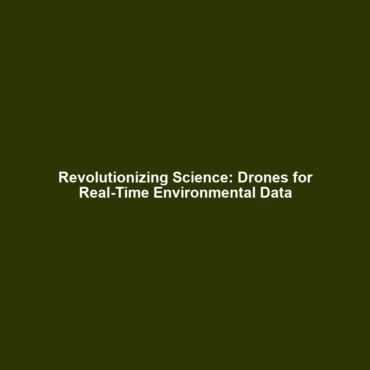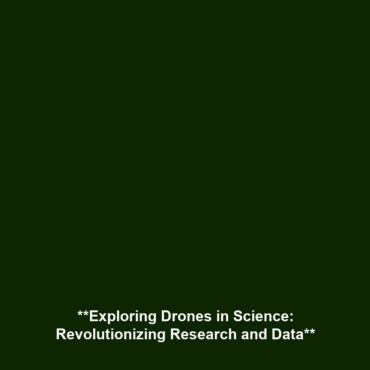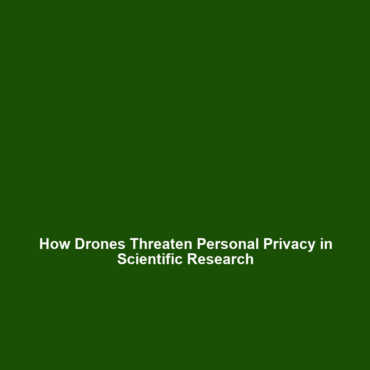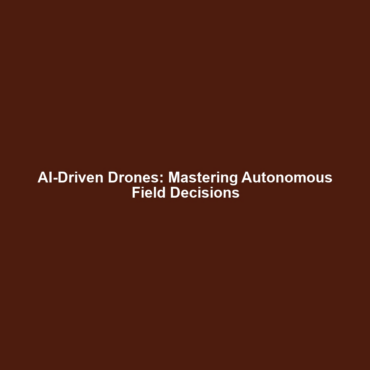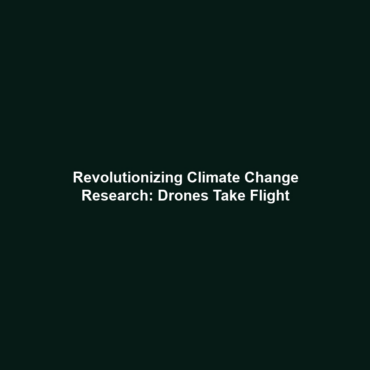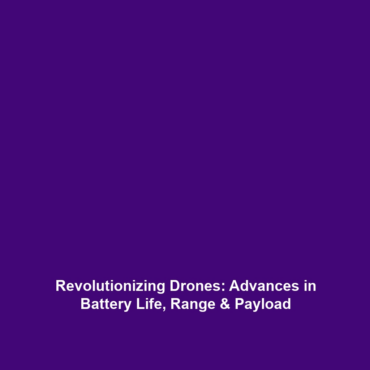The Ability to Capture Real-Time, High-Resolution Data for Environmental Monitoring, Agricultural Assessments, and Geological Surveys
Introduction
The integration of drones in science has revolutionized the way we collect and analyze data for various scientific fields. The ability to capture real-time, high-resolution data plays a pivotal role in enhancing environmental monitoring, performing agricultural assessments, and conducting geological surveys. This method not only increases efficiency but also improves the accuracy of data collected. With advancements in drone technology, researchers can now gather comprehensive information from hard-to-reach areas, enabling more effective decision-making in critical areas such as conservation, farming practices, and geological exploration.
Key Concepts
Real-Time Data Capture
The essence of real-time data capture with drones lies in their sophisticated sensors and cameras. These tools allow scientists to obtain immediate insights into environmental conditions, crop health, and geological formations. The agility and versatility of drones enable researchers to assess vast areas quickly and produce high-fidelity data.
High-Resolution Imaging
High-resolution imaging technologies utilized in drones provide enhanced visual detail, which is crucial for precise analytics in both environmental monitoring and agricultural assessments. The imaging capabilities allow researchers to identify subtle changes over time, such as vegetation health and soil composition.
Applications and Real-World Uses
Drones have a wide array of applications when it comes to capturing real-time, high-resolution data. Some prominent uses include:
- Environmental Monitoring: Drones are employed to track wildlife, monitor deforestation, and assess climate change impacts by providing detailed data on ecosystem changes.
- Agricultural Assessments: Farmers use drones to monitor crop conditions and assess water stress, facilitating timely interventions for enhancing yield and sustainability.
- Geological Surveys: Drones equipped with specialized sensors map geological features and monitor site conditions, playing a critical role in resource management and hazard assessment.
Current Challenges
Despite the advancements, there are significant challenges of capturing real-time, high-resolution data with drones:
- Regulatory Constraints: Restrictions on drone flight operations can limit data collection efforts.
- Technical Limitations: Environmental factors like wind and weather can impede drone functionality and data quality.
- Data Management: The vast amounts of data generated require sophisticated management systems for effective analysis and interpretation.
Future Research and Innovations
Ongoing research and innovations are set to transform how drones in science operate with respect to data capture. Breakthroughs in AI-driven analytics, improved sensor technology, and extended flight capabilities are paving the way for next-generation drones that can operate autonomously and gather even richer data.
Conclusion
The ability to capture real-time, high-resolution data for environmental monitoring, agricultural assessments, and geological surveys through drones signifies a major advancement in scientific research. As technology continues to evolve, the potential applications and effectiveness of drones in these fields will undoubtedly expand. For further insights into the transformative role of drones in various scientific domains, check out our other articles on environmental monitoring and advanced agricultural techniques.
